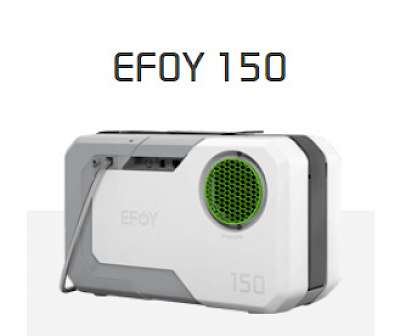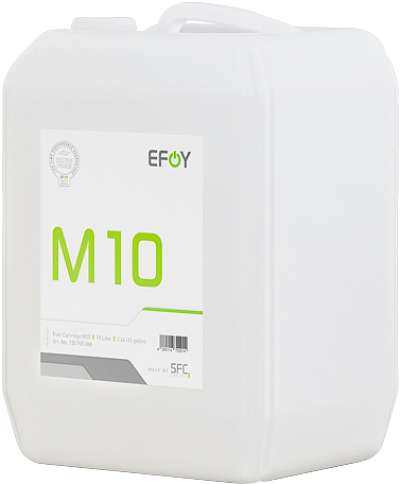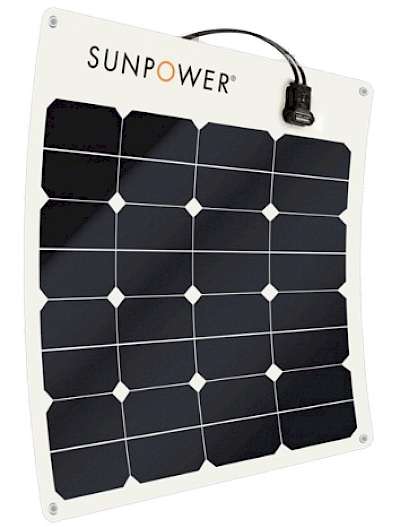
Boating Without Shorepower
This summer, many boaters may not have access to their usual marinas and outstations. That means many boaters will not have access to shore power to recharge their boat batteries or AC power to run many of the shore appliances they have onboard. There are many beautiful anchorages throughout the Pacific Northwest, but what is the best way to create a summer cruising itinerary with limited or no access to shore power?
Let’s begin with the basics. Before you embark on your summer cruise, ask yourself the following questions:
- How much energy or amp-hours do you use daily while at anchor?
- What is your battery bank capacity in amp-hours?
- How do you monitor your battery usage?
- How will you replace the amp hours you have used while at anchor?
To answer the first question, you must determine what is “electrically” important to you and your crew. How much energy or amp-hours do you use per day? The biggest draw on most boats is refrigeration; even a modest size fridge on a 9-meter boat can draw anywhere from 40 to 50 amp-hours per day. During the summer months, there isn’t much need for lights; however, the kids may want to watch a movie, or you may want to check the news or use your laptop. If you have a small freezer or ice-cube maker, add another 50 – 100 amp-hours. If you use a coffee maker, toaster oven, or microwave? Add 10 - 30 amp-hours. You get the picture.
On a side note, if you do not have an inverter onboard, this may be the summer to consider installing one as 110VAC appliances will not work on a 12V battery system without an inverter. Adding an inverter will increase the draw on your batteries but will allow you to use many of the appliances that you could only use on shore power. If you do have an inverter installed, remember that even a typical 2500W inverter/charger can draw 2 to 3 amps just for being turned on (standby) with no draws. For instance, leaving the inverter overnight will draw 8 hours X 3A = 24 Ah for doing nothing.
Here is an example of some typical daily usage we see:
Beneteau 33 - 85 Ah/Day
Catalina 36 - 150 Ah/Day
Grand Banks 42 - 175 Ah/Day
Suncruiser 38 - 225 Ah/Day
Ocean Alexander 48 - 375 Ah/Day
Meridian 580 - 500 Ah/Day
Question two, determine how much energy or amp-hours you have onboard. What is the size of your battery bank, and what type of batteries do you have? This will determine how much usable capacity you have. Remember that AGM and Firefly batteries can be discharged further and therefore have more usable battery capacity than flooded lead-acid batteries. To extend the health of your batteries, it is recommended that you do not allow your batteries to drop below a certain level before they are recharged, i.e., flooded lead-acid batteries should not be allowed to drop below 50%.
For example:
|
Battery Type: |
Number of Batteries |
Total Amp-Hours |
Depth of Discharge |
Usable Amp-Hours |
|
|
|
|
|
|
|
Flooded Lead Acid |
6 Group 31 |
660 |
50% |
330 |
|
AGM (Absorbed Glass Mat) |
70% |
462 |
||
|
AGM – Carbon Foam (Firefly) |
80% |
528 |
Question three, the best and easiest way to manage your power in and power out is a battery monitor. It is a fuel gauge and speedometer for your house batteries, and it takes the guesswork out of managing your energy consumption. There are several different brands on the market, such as Xantrex or Victron. Just remember, when you install your battery monitor, it is essential to set your battery capacity and battery type (lead-acid or AGM). Many battery monitors are preset; for example, the Xantrex LinkLite or LinkPro assumes you have 200 amp-hour lead-acid batteries. Your actual battery capacity and type will, most likely, be different, so you must change these settings for the battery monitor to give you an accurate reading.
Finally, question four, there are multiple ways to charge your batteries without shore power. The most popular charging source is your alternator. Remember, an alternator/regulator system is mechanical and only works when the engine is rotating. This means that the amperage output is variable depending on the engine rpm at idle or full cruise. The voltage regulator for your alternator will adjust the alternator output not to overcharge your batteries. For many offshore boaters, who do not have access to shore-power for long periods, the alternator is the only charging source.
Alternators are fine when the engine is running, but what is the best way to charge the batteries while at anchor or a yacht outstation without shore power? Often, this means relying on an AC generator. Some boaters even added so many amenities, like freezers and ice-makers, that the generator had to run most of the day to keep up with power demand.
If you don’t want to run your generator or don’t have one, then maybe it is time to consider installing solar panels. You can stay at anchor longer by simply installing two to four panels. You may even be able to use your existing system without adding additional batteries and without the noise and exhaust of running an engine or generator just to recharge the batteries.
Another fantastic option is to consider a methanol fuel cell, also called an EFOY, which produces electricity using the methanol in the fuel cartridge combined with air. It transforms chemical energy into electrical energy with no moving parts, making it very efficient. The EFOY is by no means a replacement for a traditional generator; its real purpose is to offset battery usage and DC loads. It comes with an integrated charge regulator that monitors the charging status of a 12-volt battery bank. The EFOY will start automatically when it senses the battery is low and then switch off when the battery is full. Like solar, the ability to have a charging source that is quiet, vibration-free, and emissions-free is really catching on in the marine community.
Now for a bonus question. Can you have all of these charging sources working at the same time? The key here is that each charging device is voltage regulated, which means that the individual charging device doesn't output what they want. The device looks at the battery voltage and, depending on where it is in the smart charge profile, brings it to the target battery voltage. You could have the solar and alternator charging while you are motoring, or you could have the solar, the EFOY, and the generator charging at anchor. Each device is voltage regulated and installed to match the charge profile of the battery, so they are truly smart chargers.
There are many different ways to boat without the convenience of shore power. It will be different on the water this year, so wherever you may be self-isolating this boating season, keep your distance and stay safe.
About the author: Jeff Cote is the owner of Pacific Yacht Systems, a full service shop delivering marine electrical and navigation solutions for recreational boats. Visit their website and blog for info and articles on marine electrical systems, projects and more: www.pysystems.ca.
Related Content






 $899.99
$899.99 $659.03
$659.03























